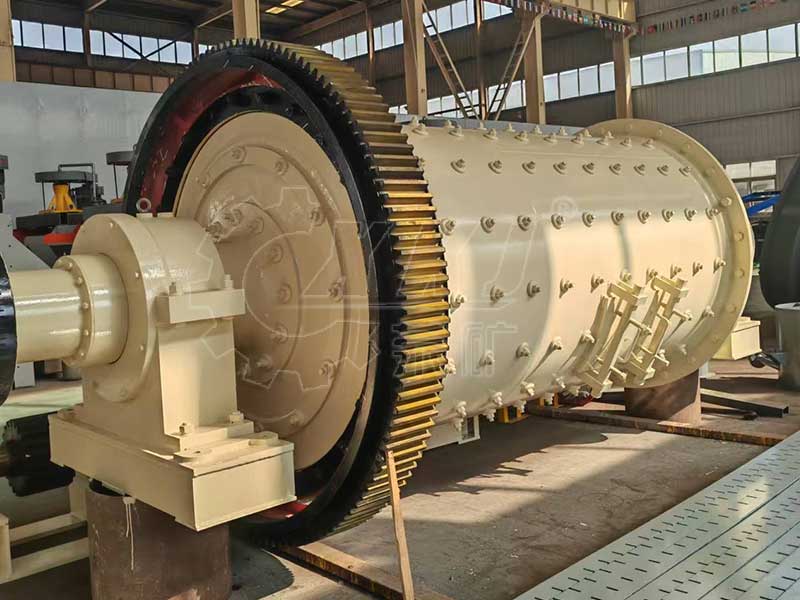Industry news
Introduction of Lepidolite Mineral Processing Equipment Ball Mill
In the lepidolite beneficiation process, ball mills play a key role in mineral separation. This dense layered aluminum silicate mineral (Li₂O content 2.0%-3.5%) requires fine grinding to disrupt its crystal structure, fully exposing the lithium and creating conditions for subsequent flotation or acid leaching. Modern beneficiation plants typically use wet grinding to crush the ore to a fineness of -200 mesh, representing at least 80%, to meet the raw material requirements of various lithium extraction processes.
Lepidolite Ball Mill Equipment Structure and Operating Principle
A dedicated lepidolite ball mill primarily consists of a rotating drum, drive system, liner, and grinding media. The drum, protected by a high-chromium steel liner, typically has a diameter of 1.8-4.5 meters and can be up to 15 meters long. It is driven by a 400-5000kW motor. During operation, the drum rotates at 60%-70% of its critical speed (approximately 15-30 rpm), driving steel balls (30-150 mm in diameter) in a "lift-and-drop" motion, crushing the ore through the combined effects of impact and grinding. A specially designed corrugated liner enhances the lifting effect of the media, while baffles control the material flow rate to prevent over-crushing.

To address the high hardness (Mohs 3-4) and fine particle size of lepidolite, modern ball mills employ several optimized design features: a three-stage ball distribution system (e.g., φ120mm:φ80mm:φ60mm = 3:4:3) to improve grinding efficiency; hydraulic sliding shoe bearings support loads of 200-2000 tons; and an intelligent monitoring system collects real-time vibration (±0.1 mm/s) and temperature (±1°C) data. Energy-saving equipment uses variable frequency speed regulation to reduce energy consumption by 30%, and a spray lubrication system extends service life. Some advanced concentrators have already adopted vertical tower mills for ultrafine grinding, achieving product particle sizes down to -400 mesh.
Key Points for Process Adaptation and Maintenance
Lepidolite ball mills should be selected and configured based on the lithium extraction process. The sulfuric acid method requires a fineness of at least 90% (-325 mesh), so a long-tube, multi-bin ball mill is recommended. The limestone roasting method can utilize standard overflow equipment. During operation, the slurry concentration (60%-75% solids content) and the steel ball filling ratio (25%-45%) must be strictly controlled. Worn liners (lifespan approximately 8,000 hours) must be replaced regularly. In recent years, the widespread use of combined high-pressure roller milling and ball milling processes has reduced unit energy consumption by over 40%, becoming a key area of technological advancement for the industry.
Categories
News
Contact Us
Contact: XKJ GROUP
Phone: 0086 138 3714 0277
Tel: 0371-65751333
E-mail: sales01@xkjgroup.com
Add: Xing yang city, Zheng zhou city, Henan province, China